
Maps have always been a great interest of mine. They create two-dimensional visuals of a multi-dimensional physical or intangible landscape, bring order to a chaotic world, simplify the unquantifiable, and help you understand where you are and where you’re going. And they bring me peace and happiness.
On any of the many road trips of my youth, you would find me sitting with the U.S. road atlas open on my lap, following along, city by city, exit by exit. Later when we would get AAA TripTiks, which were extra detailed for your route, but less detailed for the surrounding area. I still paired them with an overview map in case we needed to take a detour or veer off the road too far. Now, mapping apps have taken the place of most of these paper maps, which is great for real-time reporting, but less great for study. (Plus, you should always have a paper map backup, just in case.)
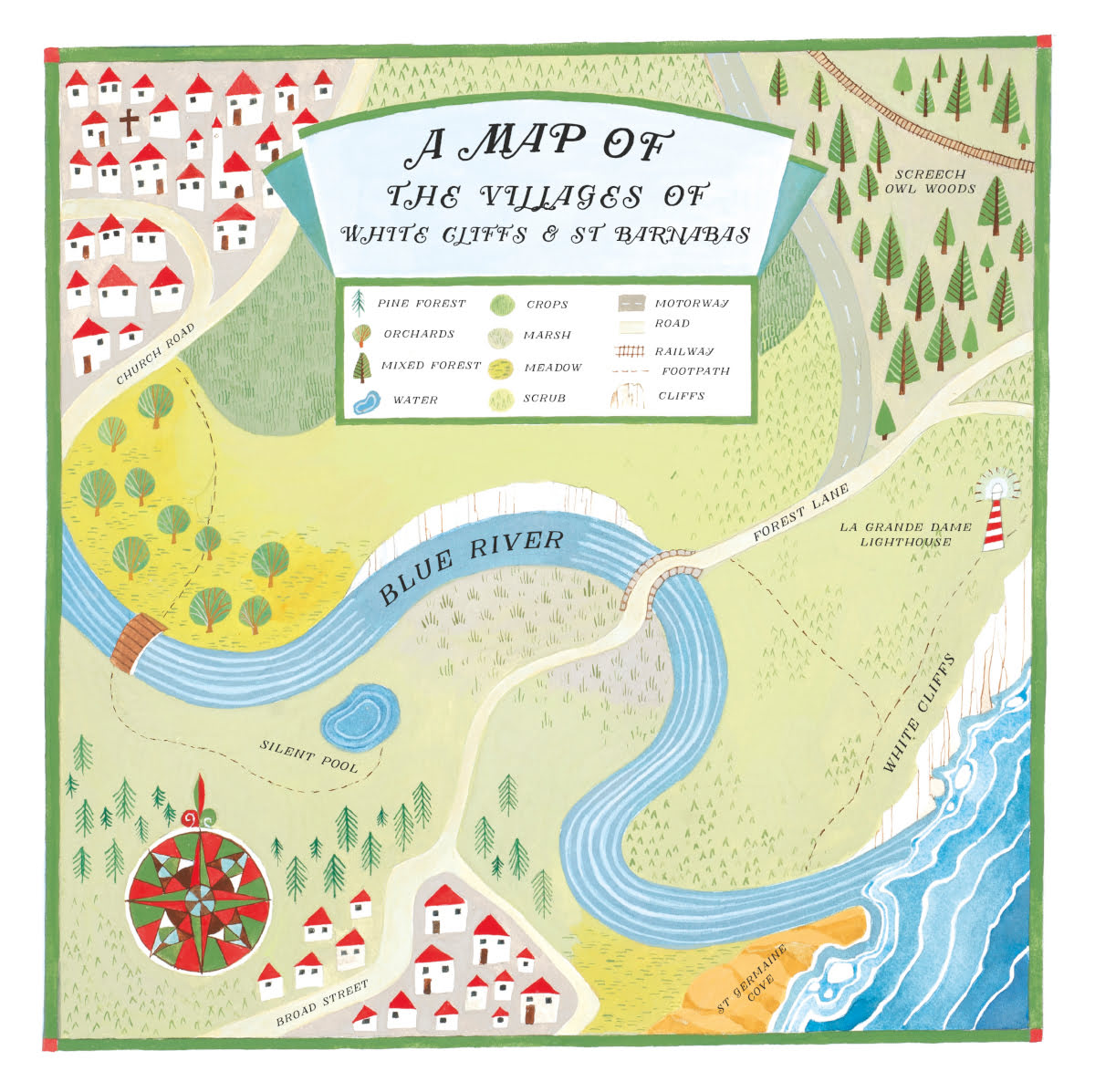
But, just because so many of us rely almost exclusively on apps for our every day mapping needs doesn’t mean we don’t crave the physical. So, beyond the road atlas, perhaps we can just create our own. How to Make Hand-Drawn Maps: A Creative Guide With Tips, Tricks, and Projects by Helen Cann will help you create any of a large number of types of maps. Written by someone who is just as passionate about maps as I am, this book teaches readers how to become mapmakers, of any type of map we wish (yes, including dungeon maps for you D&D folks). Maps that describe boundaries, maps that emphasize features we consider important, maps that describe something of ourselves or our place in the world, physical or otherwise. Even maps that mean to illustrate concepts or ideas, rather than places to visit or things to locate.

Great maps convey their information quickly and clearly, but also contain enough interesting detail to warrant further study. The best mapmakers include treats for those students of cartography who look at maps closely. They add details, whimsy, and clever layouts, so those who appreciate fine craftsmanship, in addition to informative conveyances, will get added value. Maps describe both physical and non-physical things in a visual way, on a small enough scale for us to take it all in and understand how it all works together. And you don’t need to be an artist to hand drawn your own maps.
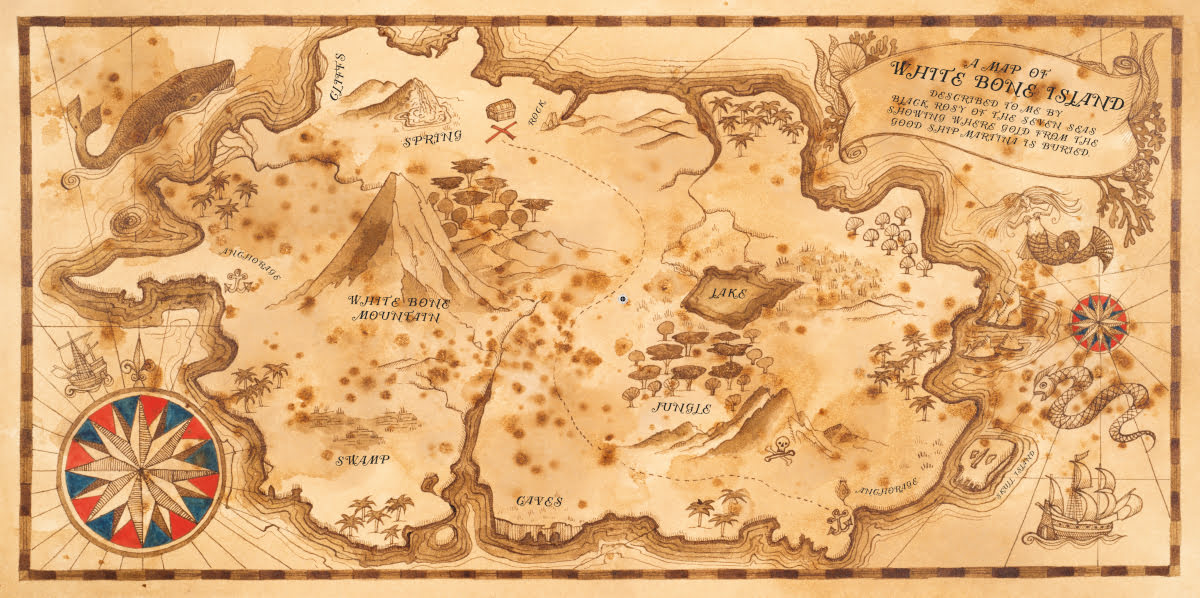
How to Make Hand-Drawn Maps isn’t just for appreciating how maps are made, though; it’s for making them yourself. It goes into some map history and then shares a valuable collection of over 30 types of maps, features of maps, and map projects you can do yourself. With gorgeous map-based artwork in a myriad of styles, you will be inspired to map your world! I sure was.
The bulk of the book is divided into sections that will take you on a journey of the map world. Within those sections, each map example includes an exercise for you to try, with steps to take and things to consider. The author includes plenty of her own examples as well as ones done by others. Most of the interior, other than the body text, is hand done.

The sections include:
Map Anatomy—This section goes into what features make up a map, such as a compass rose, lettering, cartouches, and keys and symbols.
Types of Map—This section describes picture maps, text maps, axonometric maps, negative space, blueprints, and even overview maps for platform games.
Maps of Places—In this section, you’ll find transit maps, maps that look like trees, long and narrow ribbon maps, annotated maps, dungeon maps, and treasure maps (X marks the spot!).
Maps of Ideas—This section takes us out of the tangible and helps us make sense of things that can’t be seen, such as body maps, mind maps, people maps, sensory maps, mapping story plots, genealogy charts, and more.
Projects—Here we learn how to use our hand-drawn maps in useful projects. Use them as a way to chronicle your travels, grow your family tree, or represent who you are as a person. Communicate what you find to be true through your maps. Make a map for your wedding day, make Valentine’s Day cards, send address change notes, or make your own business cards.
Sprinkled throughout the book, there are also interviews with five different map artists that show you even more examples that demonstrate techniques in different styles.
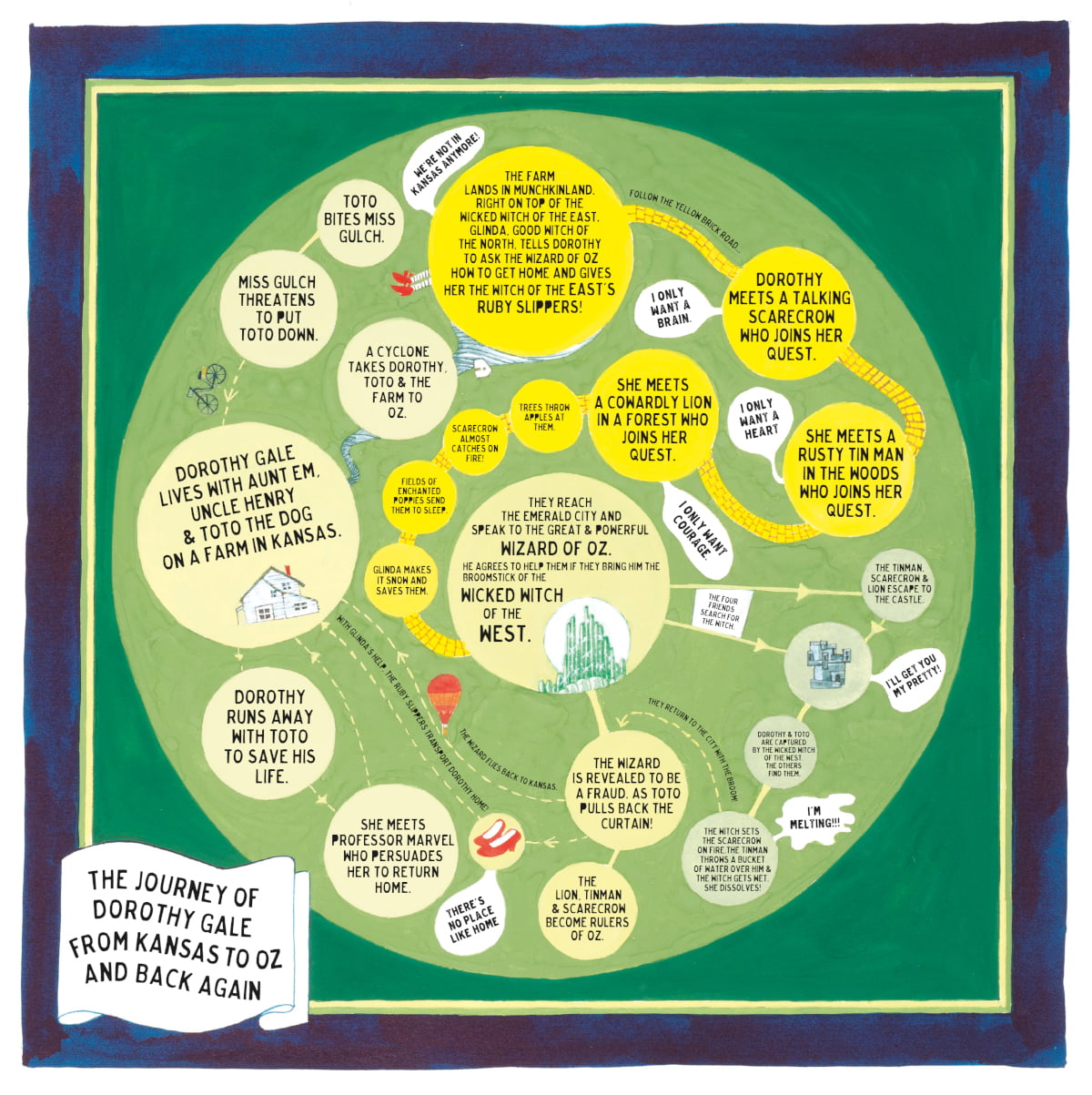
After the index and About the Author section, the book has pages and pages of templates and patterns to use when creating your own maps. There are cartouche patterns, body shapes, sectioned circles, frames, and different kinds of gridded and dotted paper. Whether you create on these pages or on your own paper, all you need to begin is a pencil. Then you can add fancy tools as you go. The pattern pages are perforated so you can remove them from the book before drawing, or to use them as a template for designs on your own paper.
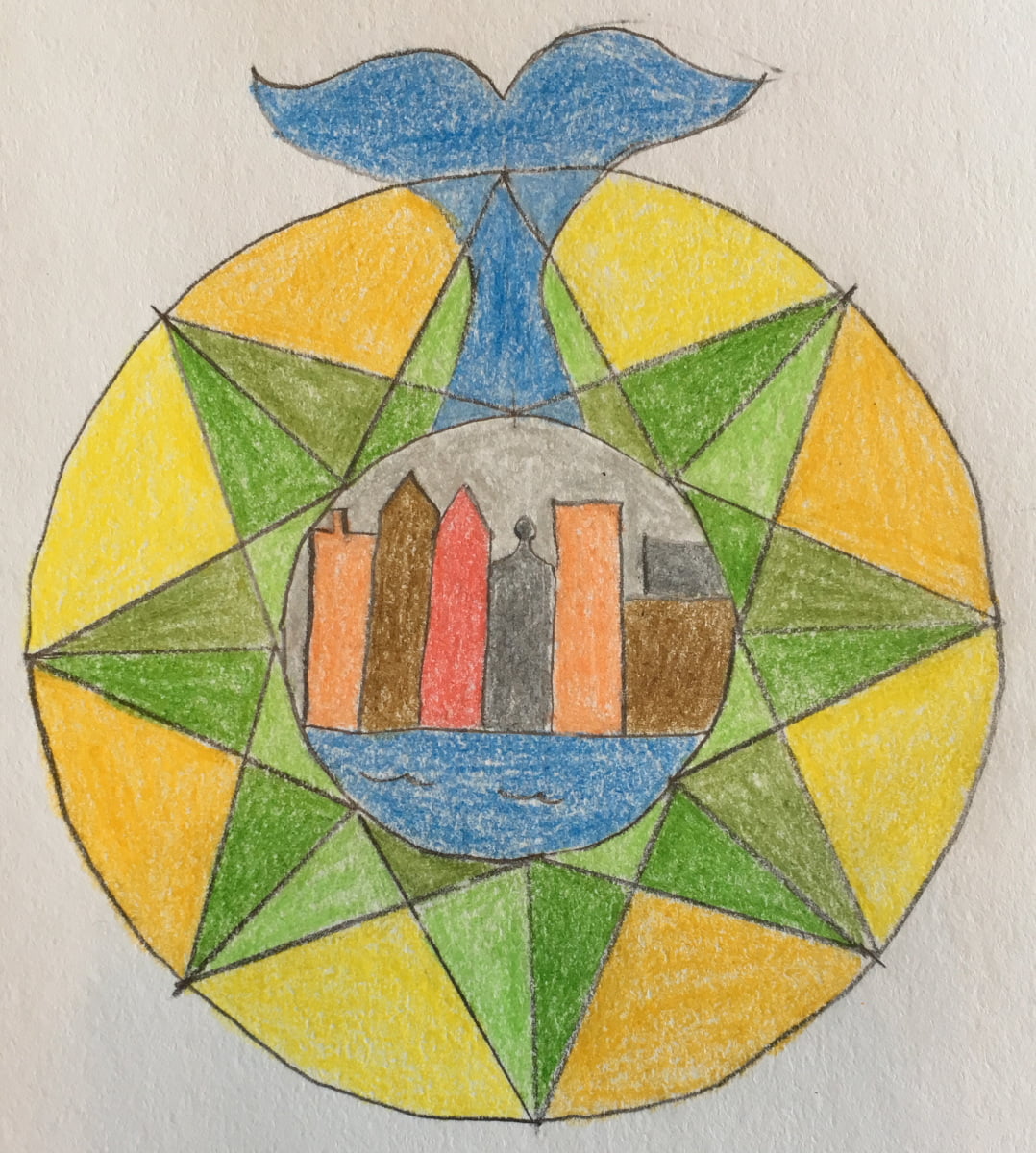
I gave a few of the maps and features a try, and will definitely be enjoying creating several other types in the future. First I made a compass rose. I didn’t have time to practice my lettering, so this one has no cardinal directions. Creating this was good fun because the majority of it is math and drawing lines with a ruler. I chose a seaside theme with a whale tail marking the North direction and put a waterfront area in the middle reminiscent of Amsterdam’s canal-side architecture.
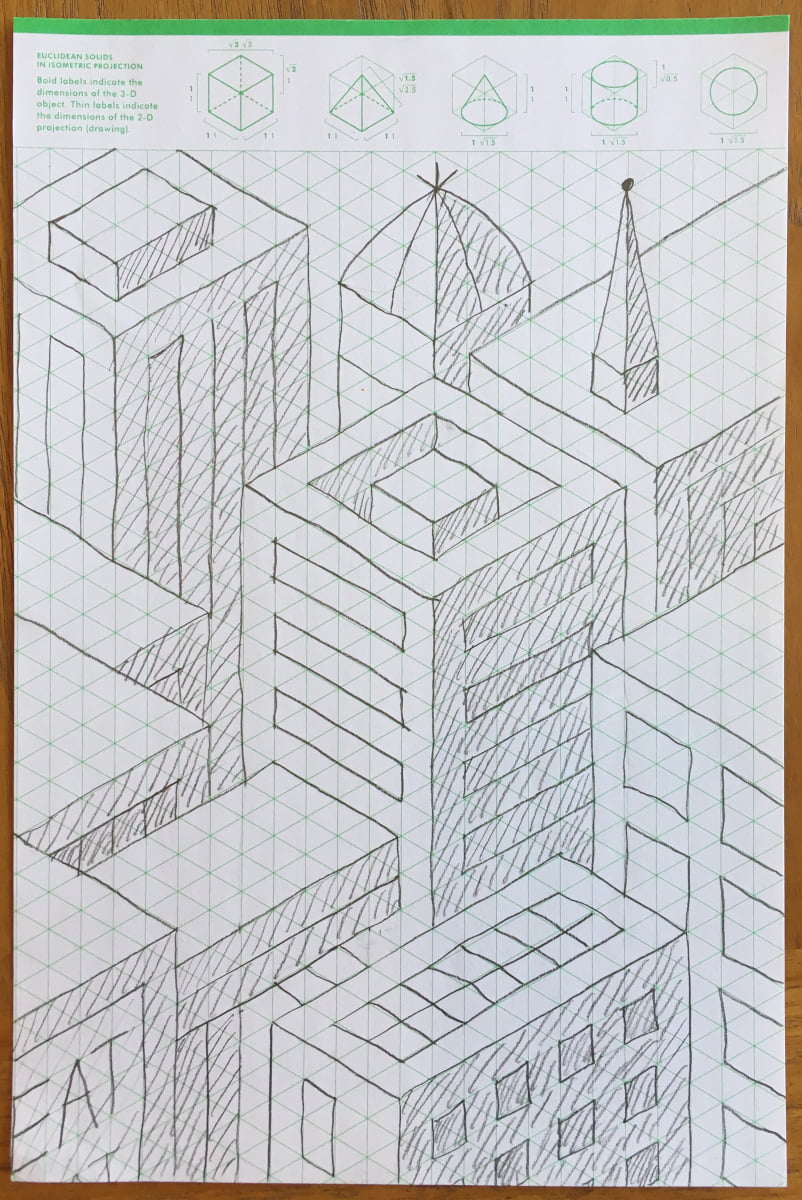
Next I created an axonometric map on isometric paper that I had left from my Grids & Guides review. I have to admit that I gave this one a try because it looked easy. And it was. I recommend it for kids and beginners. This method allows you to give the impression of a 3D scene from above. These maps give the illusion of a perspective drawing, but all of the lines are parallel and there is no vanishing point. This kind of map lends itself well to Escher-esque drawing. All you have to do is follow the lines. It is that easy. Next time I think I’ll leave the cityscape behind and invent a small village with a square.
 Third, I created a platform game map. Since I love to travel, I made part of a world map and a few paths along the way. There are boats to take, landmarks to visit, rivers to cross, and a friendly narwhal to wave at. This one was more challenging, especially without a specific game model in mind.
Third, I created a platform game map. Since I love to travel, I made part of a world map and a few paths along the way. There are boats to take, landmarks to visit, rivers to cross, and a friendly narwhal to wave at. This one was more challenging, especially without a specific game model in mind.
I found that each of the book’s map types were unique, and each listing gave some history, how-tos, tips, and visual examples of the style. The book gets you started right away and inspires you to make your own map portfolio.
How to Make Hand-Drawn Maps is an ideal gift for any map lover. It will make you want to pull out a sketchbook, pencil, inks, and watercolors and get creating your own maps. Or just use a pencil and some gridded paper! I’ve had a great time working my way through the book.
Note: I received a copy of the book for review purposes.



